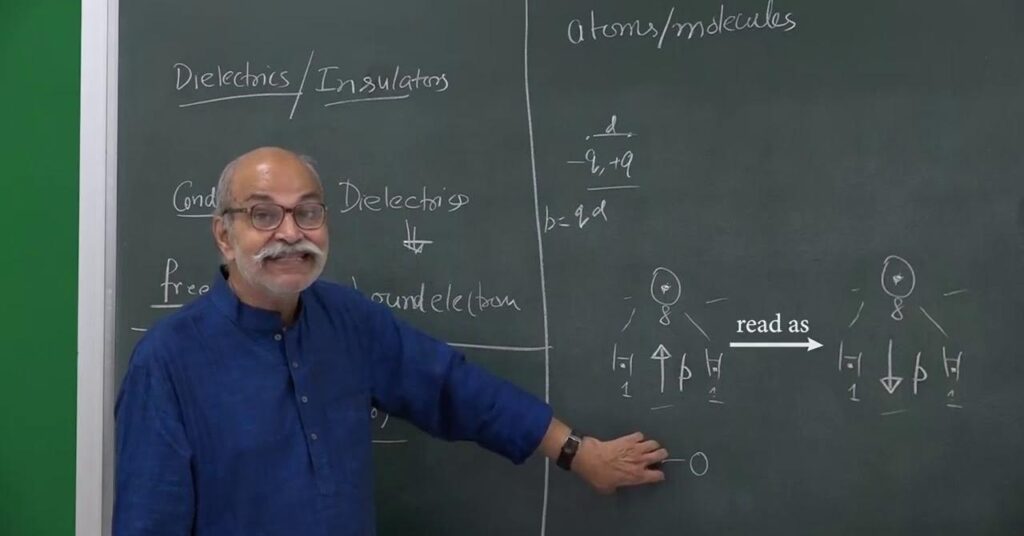Are you curious to know what is polar dielectrics? You have come to the right place as I am going to tell you everything about polar dielectrics in a very simple explanation. Without further discussion let’s begin to know what is polar dielectrics?
What Is Polar Dielectrics?
In the world of materials science and electrical engineering, dielectrics play a pivotal role in numerous applications, from capacitors to insulation. One particular subset of dielectrics known as “polar dielectrics” stands out for their unique electrical properties. In this blog, we will delve into what polar dielectrics are, how they differ from regular dielectrics, their applications, and their significance in modern technology.
Understanding Dielectrics
Before we dive into polar dielectrics, let’s briefly review what dielectrics are. A dielectric is a material that does not conduct electricity; it is an insulator. However, when placed in an electric field, dielectrics can store electrical energy. They are commonly used in capacitors to increase their capacity to store charge.
What Makes Dielectrics Polar?
Dielectrics, in general, have molecules with positive and negative charges that cancel each other out. However, polar dielectrics have an uneven distribution of charge within their molecules. This results in an electric dipole moment, which means one end of the molecule is more positively charged, and the other end is more negatively charged.
Key Characteristics Of Polar Dielectrics
- Asymmetry: Polar dielectrics have an asymmetric molecular structure, leading to the creation of an electric dipole moment.
- Electric Dipole Moment: An electric dipole moment is the measure of the charge separation within a molecule. The larger the dipole moment, the more polar the dielectric.
- Interaction with Electric Fields: When exposed to an electric field, polar dielectrics align their electric dipoles in the direction of the field, contributing to their unique electrical behavior.
- Dielectric Constant: Polar dielectrics typically have a higher dielectric constant (or relative permittivity) compared to non-polar dielectrics. This means they can store more electrical energy.
Applications Of Polar Dielectrics
Polar dielectrics find application in various fields due to their distinct electrical characteristics:
- Capacitors: Polar dielectrics, such as ferroelectric materials, are widely used in capacitors to enhance their energy storage capacity.
- Non-Volatile Memory: Ferroelectric materials are used in non-volatile memory devices, where data is retained even when power is disconnected.
- Sensors: Certain polar dielectrics are used in sensors that detect changes in temperature, pressure, or humidity by measuring variations in their dielectric properties.
- Piezoelectric Devices: Piezoelectric materials are a subset of polar dielectrics that convert mechanical energy into electrical energy and vice versa. They are used in ultrasound devices, piezoelectric sensors, and actuators.
- Microelectronics: Polar dielectrics play a role in microelectronic devices, such as microelectromechanical systems (MEMS) and radio frequency filters.
- Optoelectronics: Some polar dielectrics exhibit nonlinear optical properties, making them valuable in optoelectronic devices like laser systems and optical modulators.
Significance Of Polar Dielectrics
The unique electrical properties of polar dielectrics have opened doors to innovation in various fields of technology. They play a crucial role in improving the efficiency and capabilities of electrical components, from capacitors that store energy in electronic devices to sensors that detect and respond to environmental changes. Additionally, the piezoelectric properties of certain polar dielectrics have enabled advancements in medical imaging and communication technologies.
Conclusion
Polar dielectrics, with their electrically dynamic behavior and ability to store electrical energy efficiently, have become integral to modern technology. Their applications extend across diverse fields, making them a key focus of research and development. Understanding the behavior of polar dielectrics continues to drive innovation in electrical engineering, microelectronics, and optoelectronics, contributing to the advancement of numerous technologies that shape our daily lives.
FAQ
What Are The Polar And Non Polar Dielectrics?
Polar dielectrics are the polar compounds that do not conduct electricity. Non polar dielectrics are the non-polar compounds that do not conduct electricity. Shape of these dielectrics are asymmetric. Shape of the dielectrics are symmetric. Polar dielectrics are polar.
What Is Dielectric Class 12?
Dielectrics, in general, can be described as materials that are very poor conductors of electric current. They are basically insulators and contain no free electrons.
What Is The Difference Between Polar And Nonpolar?
When things are different at each end, we call them polar. Some molecules have positive and negative ends too, and when they do, we call them polar. If they don’t, we call them non-polar. Things that are polar can attract and repel each other (opposite charges attract, alike charges repel).
What Are Polar Dielectrics Give An Example?
Polar dielectrics are substances attracted to the electric field because of an electric charge. The same polarity attracts the molecules of these materials. The material is dipoles or polar, but the substances attract one another because the dipoles are opposite in sign.
I Have Covered All The Following Queries And Topics In The Above Article
What Is Polar And Nonpolar Dielectrics
What Is Polar Dielectrics And Nonpolar Dielectrics
What Is Non Polar Dielectrics
What Is Polar Dielectrics And Non Polar Dielectrics
What Is Non Polar Dielectrics
What Are Polar Dielectrics Class 12
What Are Polar Dielectrics Give Examples
What Is Polar Dielectrics In Physics
What Is Polar Dielectrics Class 11
What Is Polar Dielectrics And Nonpolar Dielectrics
What Are Non Polar Dielectrics Class 12
Examples Of Polar And Non Polar Dielectrics
What Is Polar Dielectrics
What is an example of a polar dielectric Class 12






